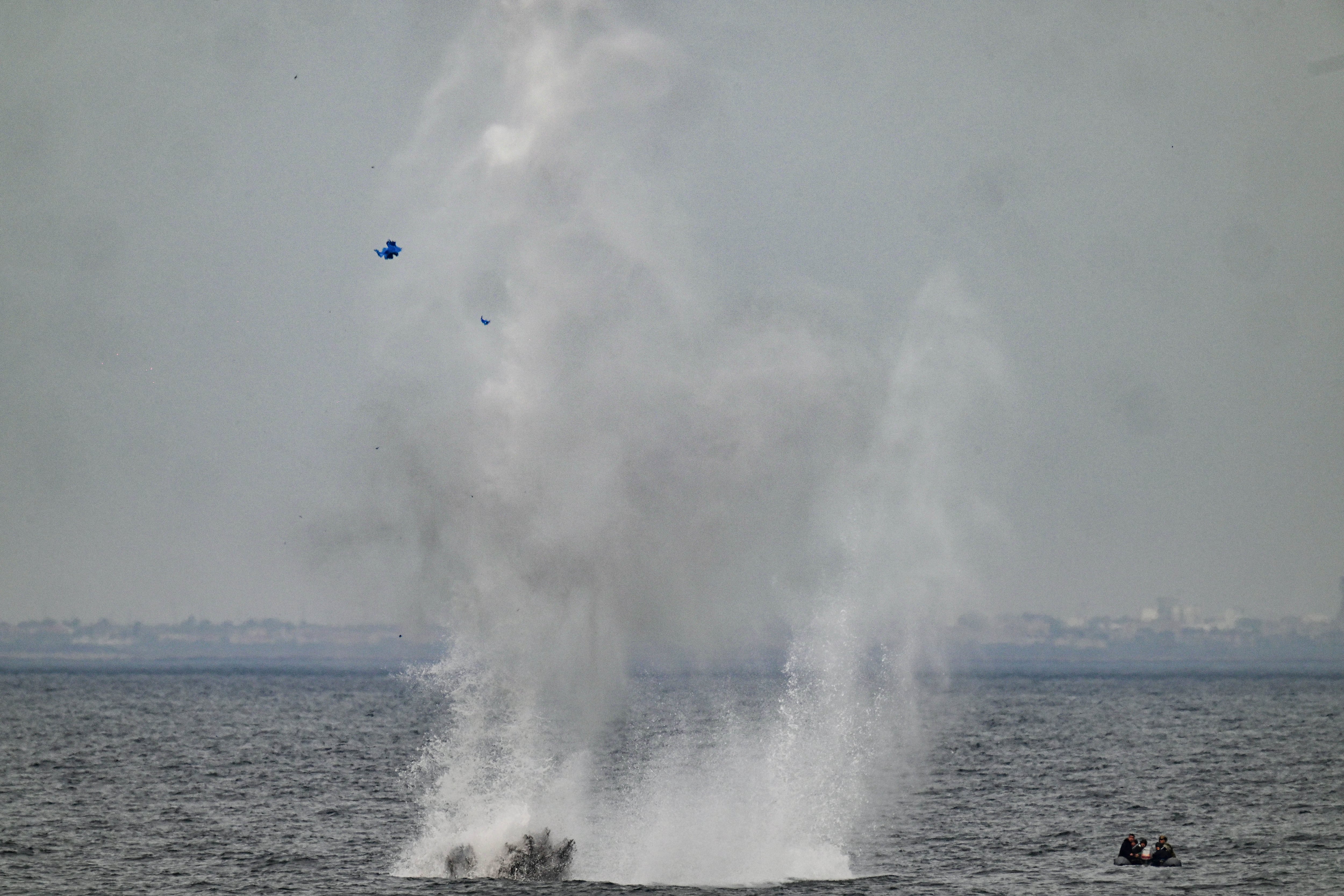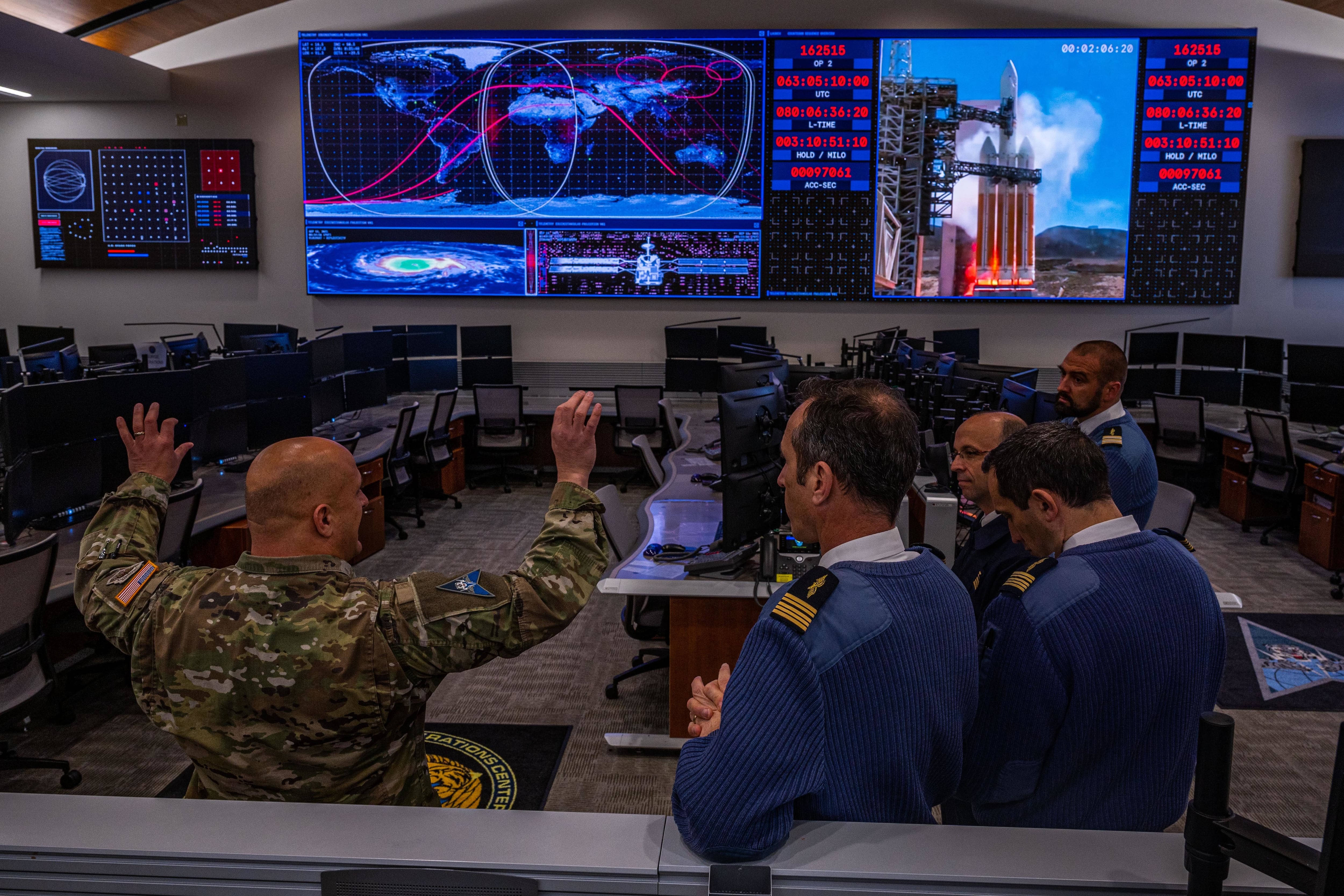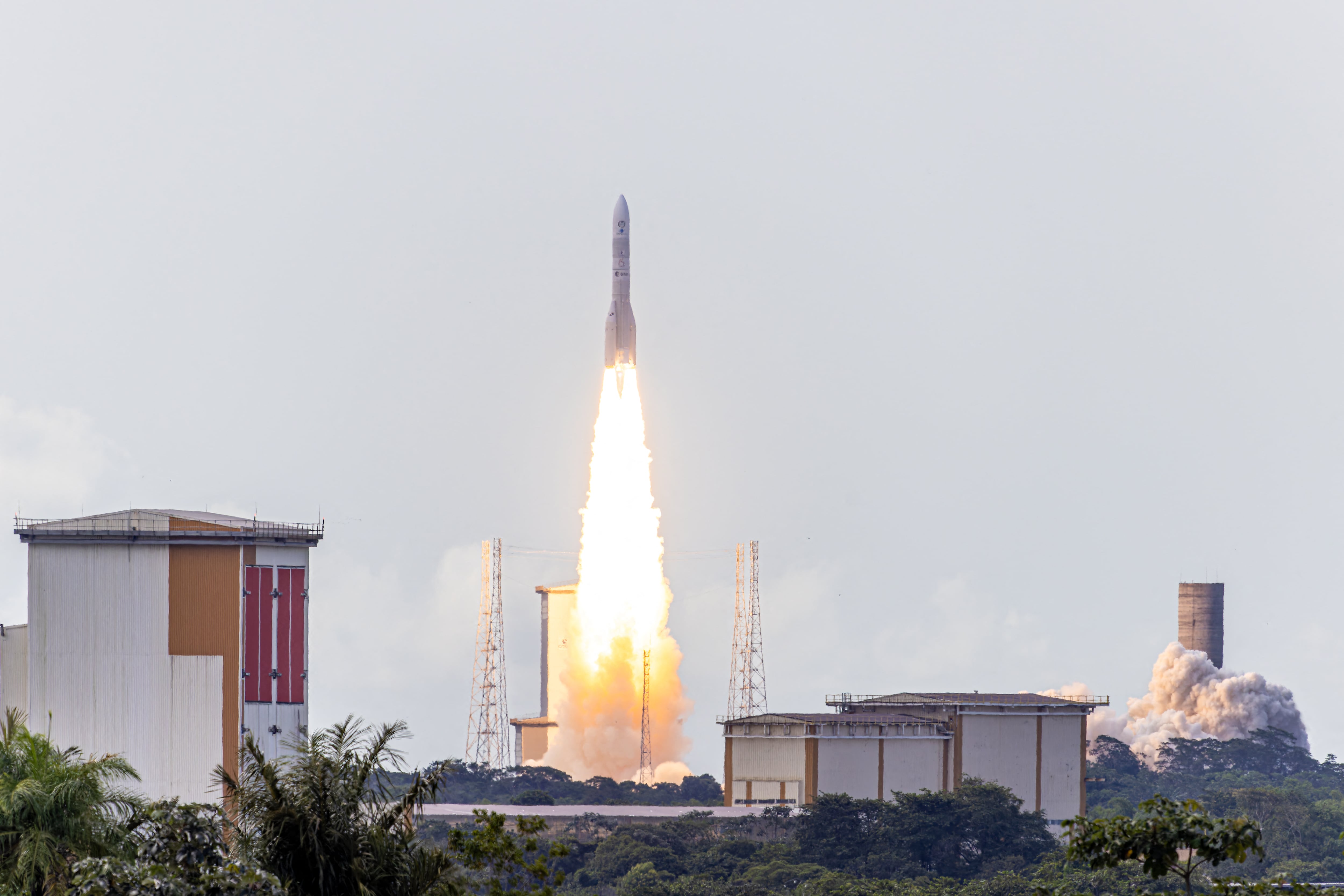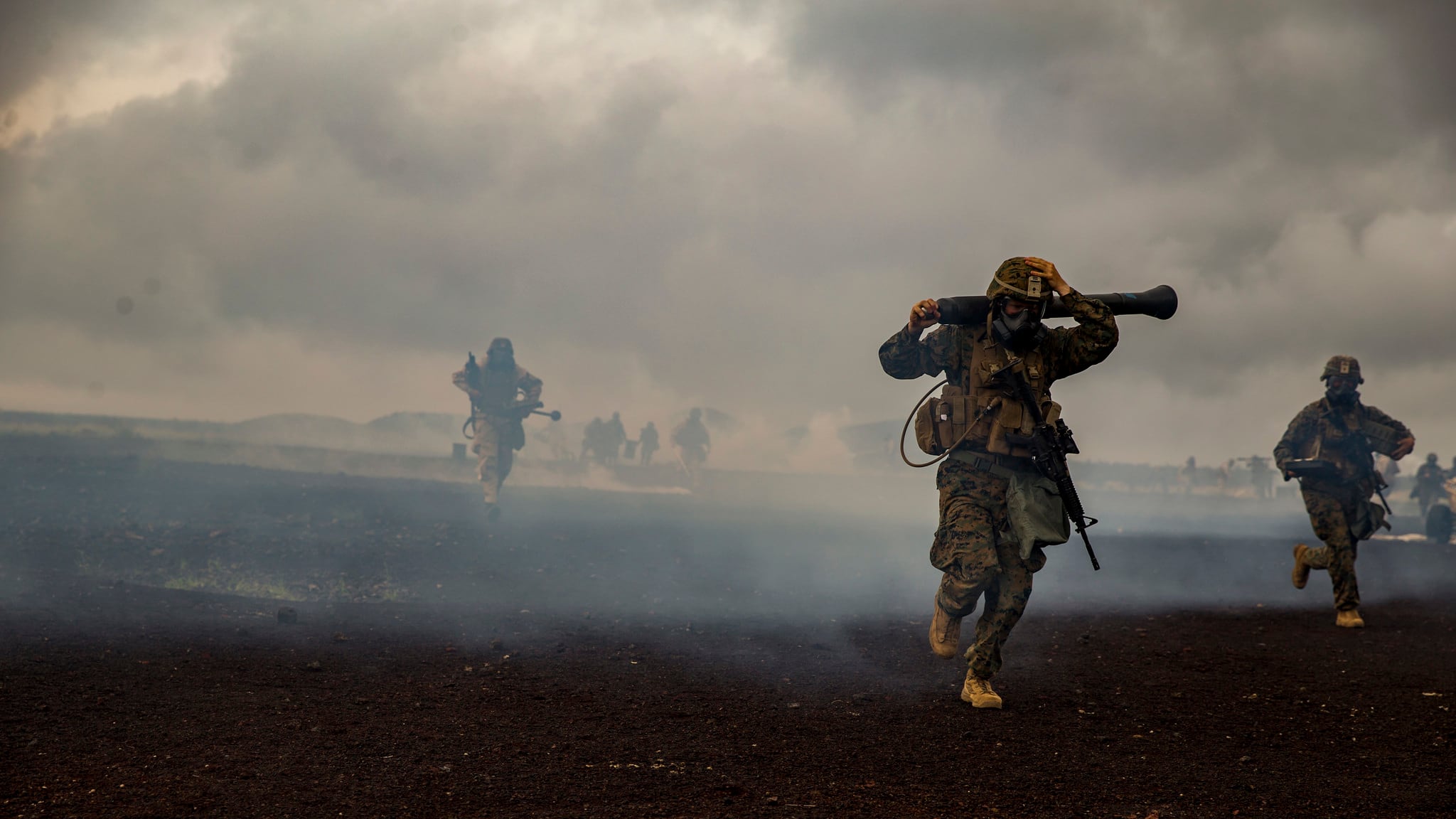COLOGNE, Germany — Rheinmetall has unveiled a new scouting configuration of its Mission Master ground robot, ratcheting up competition in a European market segment that is set to heat up in the coming years.
The new version features a suite of sensors mounted on a collapsible, 3.5-meter mast, including an infrared sensor, a surveillance radar and a 360-degree camera. A laser rangefinder and target designator are also included on the vehicle, as is a 7.62mm gun on a remote-controlled weapon station, according to a company statement.
“The Mission Master-Armed Reconnaissance is designed to execute high-risk scouting missions and deliver a real-time common operating picture without putting soldiers in danger,” the German company said.
The six-wheeled vehicle’s autonomous functions are powered by Rheinmetall’s PATH kit, which the company advertises as a means to turn any vehicle into an unmanned platform. Multiple vehicles can be combined to operate as part a “Wolf Pack” cluster, a technology enabling communications, cueing and targeting toward a common mission objective, according to Rheinmetall.
Ground robots with varying degrees of autonomy are rapidly becoming critical for ground forces worldwide. Cargo transport and surveillance are some of the most obvious applications. While some of the new robots carry weapons, Western manufacturers have shied away from connecting their most advanced autonomy algorithms to the process of firing them.
Rheinmetall’s Mission Master series is something of a counterpoint to Estonia’s Milrem Robotics, which has been making inroads with European ground forces through its tracked THeMIS vehicle. Milrem has advertised its operational experience by way of a THeMIS deployment with the Estonian military to the French-led Barkhane counterterrorism mission in Mali.
Milrem also sits atop a smattering of European companies charged with developing a common architecture for unmanned ground vehicles under the umbrella of the European Defence Industrial Development Programme. The effort is named iMUGS, which is short for “integrated Modular Unmanned Ground System,” and it received roughly $36 million in European Union funding over the summer.
“The ambition is no less than developing an F-16 [fighter jet] of unmanned ground systems,” Kusti Salm, director general of the Estonian Centre for Defence Investments, was quoted as saying by the Baltic Times website in 2019.
The iMUGS effort centers around Milrem’s THeMIS vehicle as a prototype platform. Notable European land warfare companies are part of the consortium, including Germany’s Krauss-Maffei Wegmann and France’s Nexter. Absent from the EU-endorsed roster is Rheinmetall, which has mounted its own marketing and outreach campaign for the Mission Master series.
Earlier in November, the company announced it had given a sample vehicle to the Royal Netherlands Army for experimentation. The robot will undergo a two-year evaluation toward what Rheinmetall described as “Future Manoeuvre Elements” to aid Dutch ground forces during operations.
The Dutch previously ordered the THeMIS from Milrem.
During the spring, Rheinmetall delivered four Mission Master vehicles configured for cargo transport to U.K. forces.
“These unmanned ground vehicles will form part of the United Kingdom’s Robotic Platoon Vehicle program,” Rheinmetall said in a statement at the time. “This program is designed to determine the extent to which unmanned vehicles can boost the combat effectiveness and capabilities of dismounted troops at platoon level.”
Sebastian Sprenger is associate editor for Europe at Defense News, reporting on the state of the defense market in the region, and on U.S.-Europe cooperation and multi-national investments in defense and global security. Previously he served as managing editor for Defense News. He is based in Cologne, Germany.








